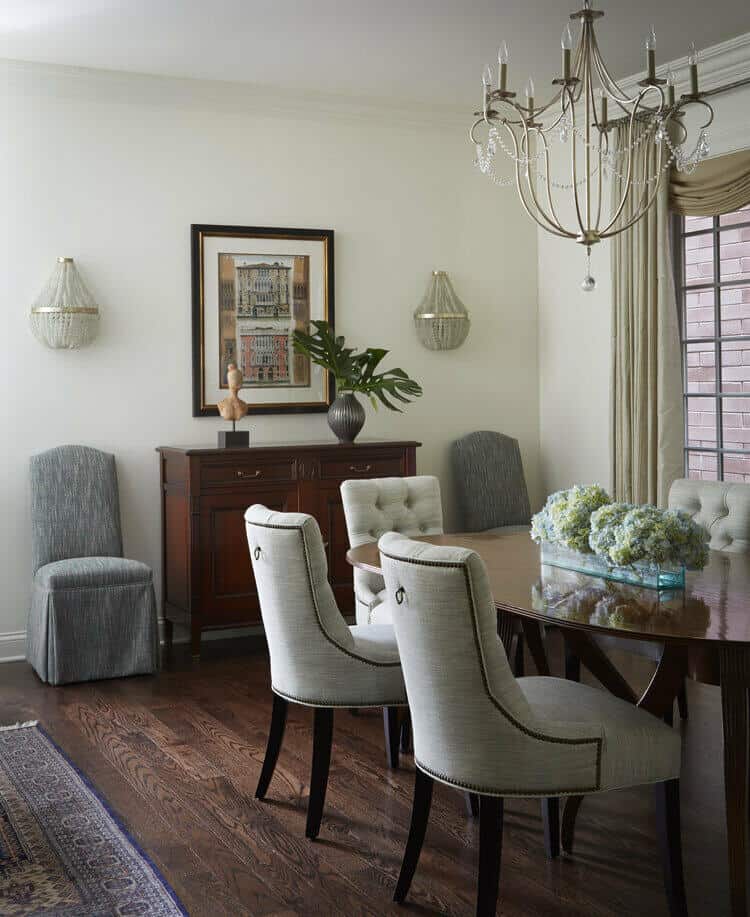
Designing a Dining Room Fit for Gathering
There is no doubt that summer is looking a little different around here, but there are always silver linings around, if you’re willing to look for them. In the midst of a home-centric summer, we are looking forward to small gatherings in our dining rooms and on our patios, which is why we are devoting an entire month to bringing you summer entertaining ideas and design tips that will make your time together relaxing and even more enjoyable.
To kick the month off, I’m revealing my favorite design tips for creating dining rooms that exude welcome and perfectly enable the flow of an evening of entertainment.
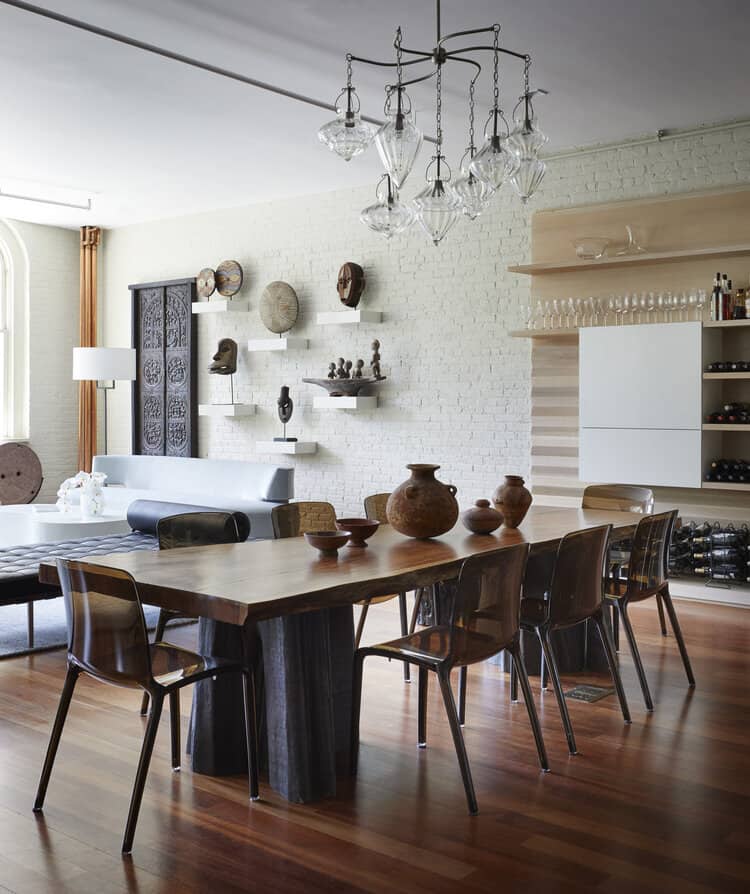
First and foremost, consider the size and shape of the room.
Every dining room has its own footprint, and in an effort to make the most out of your entertaining experiences, it’s important to let the floorplan guide the design. The last thing you want is a room that leaves you struggling to shimmy past the outside chair with a tray of crudités in hand. Measure, measure, and then measure once more to ensure your furniture selections allow for movement in the room and don’t overcrowd the space. A good rule of thumb is to leave 30-36 inches of space between the chairs and the wall or an adjacent piece of furniture.
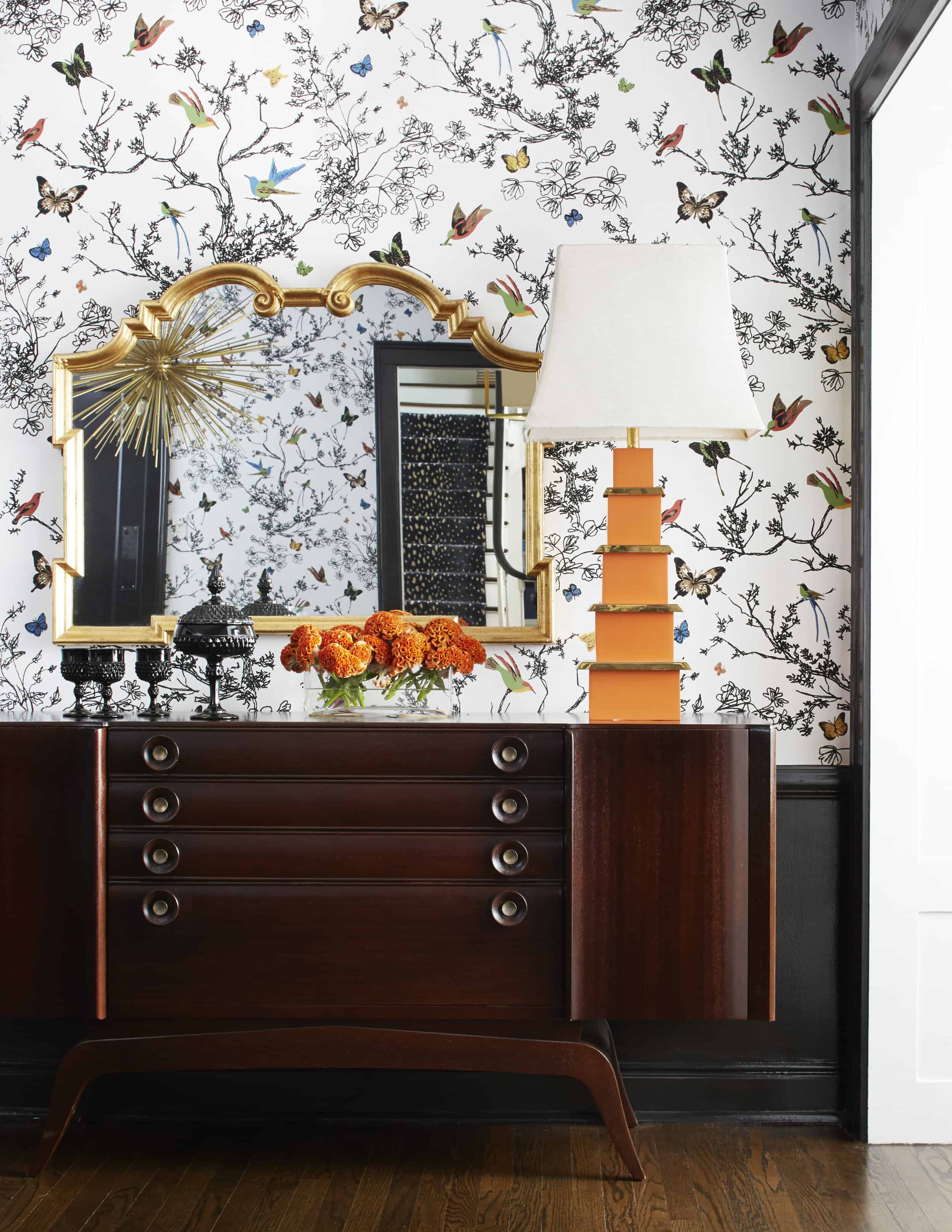
Think about how often you entertain.
If you are an avid entertainer, welcoming friends and family into your home every weekend, your design decisions will need to prioritize entertaining logistics. For example, if you are a frequent entertainer, I would suggest sourcing a table as large as the room allows, or searching for a table that can extend. Another great option is to consider a custom table to ensure you are taking advantage of every inch of the space.
We are currently working with a vendor to create a custom dining room table for one of our clients that is 36 inches wide and 128 inches long. Having a slimmer table allows for more intimate conversations and the longer length easily allows the table to seat 10-12 comfortably, maximizing the shape of the room for this routine host.
If space allows, I would also recommend an avid entertainer add a console that provides storage for extra dishes and serving pieces, while also doubling as a place to serve cocktails and appetizers. If you aren’t hosting frequently, this might not be necessary, as you can store your serveware in another area of the home.
Let your entertaining routines guide the design, so it works for you and your lifestyle.
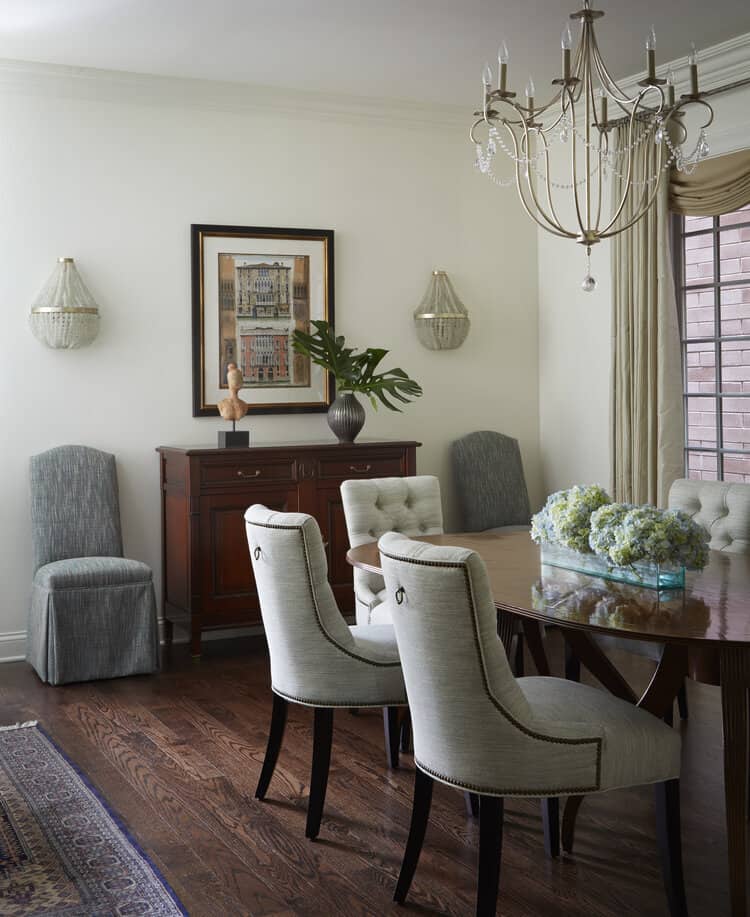
Layer your lighting for a dynamic aesthetic.
Don’t forget to prioritize one of the most transformative design elements of your space: lighting. I always recommend layering light sources to provide a richer, more welcoming ambiance, while allowing the flexibility to utilize your lighting in different ways with dimmers. Incorporate lighting elements such as a beautiful, statement chandelier, wall sconces, art lights, or even lamps for a dynamic look and feel.
It’s also important to keep scale top of mind. If your lighting is too minimal, not only will it look lost in the room, but it may not provide ample illumination. A secret designer trick for selecting perfectly-sized overhead lighting is to add the width and the length of the room (measured in feet.) That number will give you how many inches wide your light should be. I am never afraid to go a little bigger than that rule of thumb — however, know that the lighting will then become the star of the room, so I’d recommend scaling back on other elements to let it take pride of place.
You may have noticed this by now, but lighting hits the sweet spot for me, as it truly can make all the difference in a room — read more of my tips on lighting design Learn more.
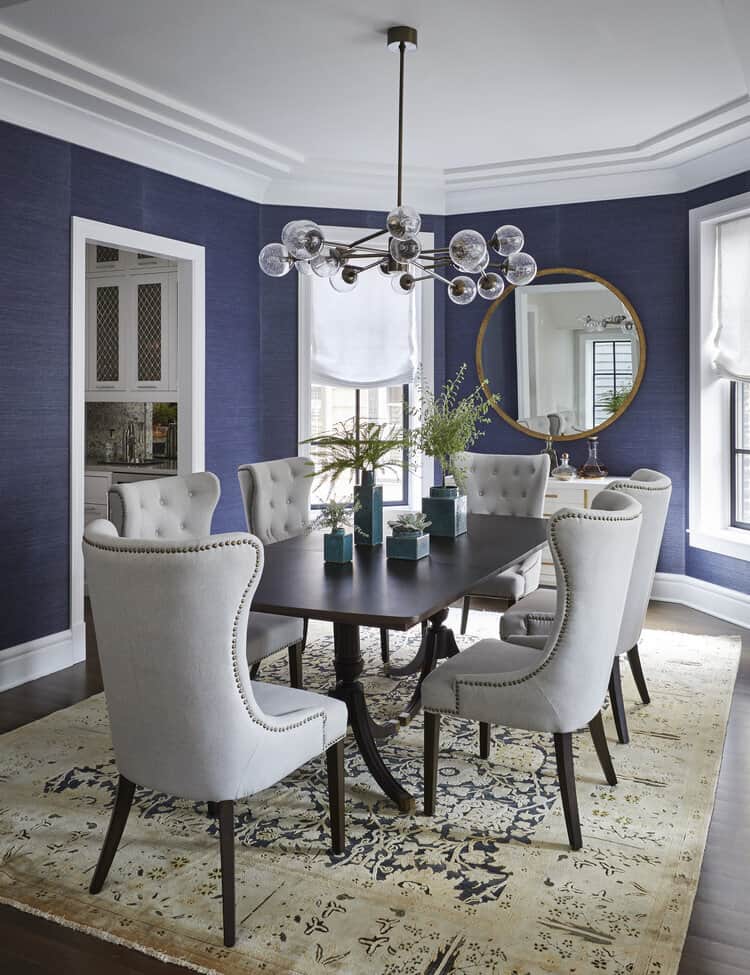
Prioritize comfort to create a welcoming atmosphere.
Too often, dining rooms are designed to become a beautiful room that you pass by as you walk straight to the kitchen to eat your daily meals, but it’s important to make sure every room in your home is useful and inviting. A dining room should be grounded in a sense of comfort that feels welcoming and becomes the perfect entertaining spot, rather than a room you use once a year for holiday dinners.
Ensure your seating uses soft fabrics for physical comfort as well as visual softness, to balance the metals of the lighting fixtures and hard surfaces of the table and console. Too much wood can feel a bit cold, so the softness of comfortable seating grounds the space nicely and makes you want to put the room to use.
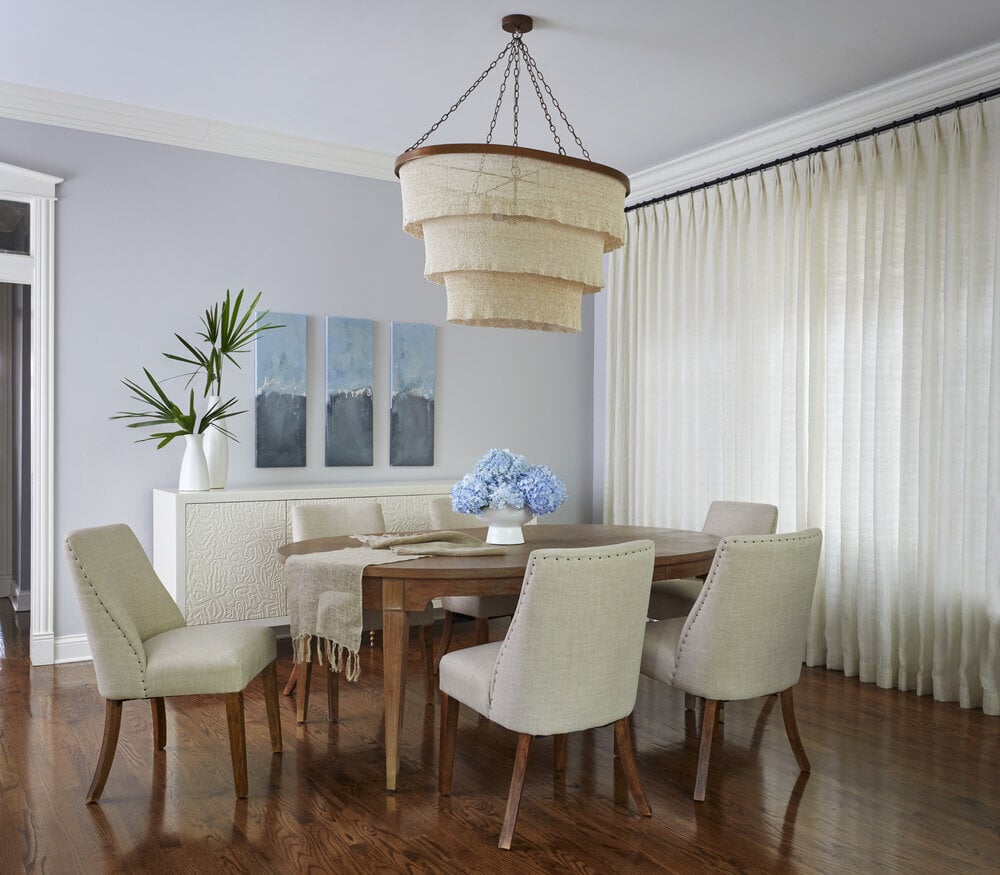
Bring the room to life with color and texture.
To create that welcoming, warm feel every host dreams of, color and texture are key to your design.
I love to start with beautiful window treatments that add texture and depth to a room. They create a warm yet striking statement the moment you walk into the space — chic, meticulously crafted window treatments can immediately elevate the room. An area rug will also add cozy texture and can be great for tying colors together or grounding the room in a complementary neutral. The addition of both window treatments and an area rug will not only add infinite warmth, but it will also help with the acoustics of the room, which is something many hosts forget to prioritize.
On to the grace notes: fresh-cut flowers and an array of candles are a must in my book while entertaining, adding a touch of softness to the space.
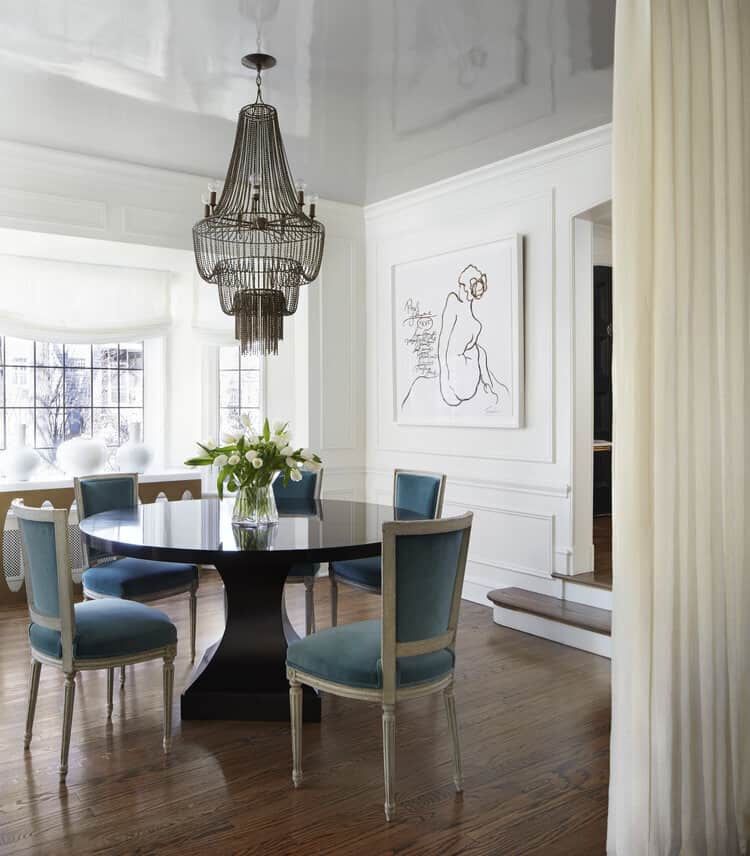
Give your dining room seasonal attention.
With all that tabletop real estate, the dining room table is the perfect spot for a striking centerpiece. To keep things seasonally updated, I invest in a few beautiful vases or urns that I can then fill with seasonal greenery, florals or branches for an elevated entertaining touch that shows thoughtfulness and attention to detail.
I truly love the opportunity entertaining allows to showcase your design style while also gathering loved ones, and creating a dining room that can serve as your entertaining headquarters is critical. No matter the weather, you always have a space to gather. Stay tuned for more entertaining tips later this month, and if you haven’t signed up for our newsletter yet, be sure to sign up below — even more exclusive entertaining tips will arrive in your mailbox later this month.
amy kartheiser design
home
about
services
portfolio
press
contact
Copyright © 2025 Amy Kartheiser Design | Website design by the la.rue creative studio